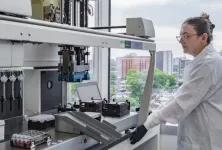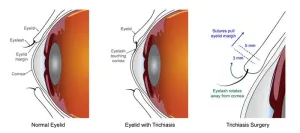(Press-News.org) University of Maryland School of Medicine (UMSOM) Dean Mark T. Gladwin, MD, has announced the formation of a new Department of Pharmacology, Physiology and Drug Development, which merges the Department of Physiology and Department of Pharmacology. This new Department aligns the basic science research efforts of both entities with a strong emphasis on the development of new drug therapies.
The Department will host three divisions spanning Cancer Therapeutics, Molecular Physiology, and Neuropharmacology, creating additional opportunities for research partnerships across current UMSOM Centers, Institutes, and the new BioPark at 4MLK.
“This is a natural merger of existing research ecosystems that will allow us to expand our opportunities in basic cancer research, and align cancer biology and drug development with our traditional strengths in pharmacology and physiology,” said Dean Mark T. Gladwin, MD, who is the John Z. and Akiko K. Bowers Distinguished Professor and Dean of UMSOM, and Vice President for Medical Affairs at University of Maryland, Baltimore. “Combining strengths in target discovery and therapeutic development in physiology, neuroscience and cancer will also allow the department faculty to leverage commercialization and venture capital funding from many sources, and advance novel approaches for disease treatment.”
Stuart Martin, PhD, an Endowed Professor and Deputy Director at the Marlene and Stewart Greenebaum Comprehensive Cancer Center (UMGCCC) has been named Interim Chair of the Department. Tom Blanpied, PhD, Vice Chair of the Department of Physiology, Director of the Confocal Microscopy Core and of UMGCCC’s Imaging Shared Services, will continue to serve in the merged unit as Vice Chair.
“I am very enthusiastic about the opportunity, as these two departments have a long history of collaboration,” said Dr. Martin. “This merger brings together basic science researchers with those involved in drug development to advance new treatments here at the School of Medicine.”
Over the years, past collaborations between the two departments have driven synergy and pivotal discoveries in the underlying mechanisms of disease, from cancer to mental health disorders. In 2020, Dr. Martin along with a team of UMSOM faculty across the Departments of Physiology, Pharmacology, Orthopedics, and Biochemistry published a study in PNAS uncovering how calcium signaling and the conversion of mechanical force affects breast cancer cell behavior. The research could eventually lead to new therapies to help intervene in disease progression.
Added Dr. Blanpied: “There is a lot of fertile ground for incredible research between these two departments. I am excited to define a shared mission and aim for greater goals as we increase our collaboration.”
Margaret McCarthy, PhD, Endowed Professor and Chair of the Department of Pharmacology, will transition from her Chair role to focus on growing and expanding the University of Maryland - Medicine Institute of Neuroscience Discovery (UM-MIND) where she has been serving as the Director. This institute, launched in 2023, conducts translational research of the brain and fosters collaboration between basic and clinical neuroscientists. During her tenure, she helped the Department of Pharmacology achieve great heights by recruiting outstanding new faculty in the areas of neuropharmacology and oncopharmacology. Dr. McCarthy and her colleagues have made ground-breaking advances in exploring gender differences in the brain with more than $20 million in federal research funding over the past 30 years. With over 200 scientific manuscripts published, Dr. McCarthy’s research has led to new innovations in federal research policies, establishing new guidelines for including females on a more equal basis in basic and clinical research studies.
“It has been an honor to witness the many impacts we have had in the Department of Pharmacology over the last 13 years and to work alongside such talented scientists,” said Margaret McCarthy, PhD. “As I expand my efforts with UM-MIND, I am excited to support the evolution and goals of the newly created department.”
Dr. Martin’s Ground-Breaking Breast Cancer Research
With a focus on bioengineering, tumor cell biology, and the molecular mechanisms to inhibit cancer metastasis, Dr. Martin is widely regarded for the research and discovery of thin membrane protrusions called “microtentacles” on the surface of breast cancer cells which may indicate how cancer spreads to other parts of the body. In 2020, his research team furthered this work and invented a novel device called TetherChip, to enable better testing for microtentacles. The tiny fluid-filled device preserves tumor cells by preventing cell adhesion and has been awarded a US patent with the goal of seeking FDA approval.
Dr. Martin has published more than 90 articles in high-impact scientific journals, including Cancer Research, Nature Biomedical Engineering, Science Signaling and Clinical Cancer Research. He was one of only three investigators in the U.S. in 2010 to receive an Era of Hope Scholar Award from the Department of Defense for his innovative research on breast cancer.
After joining UMSOM as a faculty member in 2004, Dr. Martin served as a Professor of Physiology for 16 years before transitioning to the Department of Pharmacology in 2020. In recognition of his transformative contributions in cancer research, he was invested as the Drs. Angela and Harry Brodie Professor in Translational Cancer Research.
Dr. Blanpied is a Leading Neuroscientist and Imaging Expert
Dr. Blanpied’s research primarily serves to understand the cellular processes underlying healthy cognitive function as well as psychiatric disorders. His lab hosts nine researchers and utilizes cutting-edge visualization techniques to examine protein organization in synapses, the connections in the brain that support message transmission between cells of the central nervous system. He also serves as Director of UMSOM’s Confocal Microscopy Core, which offers researchers state-of-the-art equipment for high-resolution imaging (both in vivo and in vitro) as well as UMGCCC’s Imaging Shared Service (ISS) providing cell, animal, and human imaging technologies for over 160 users.
In 2016, he discovered a unique architecture within synapses, coined the “nanocolumn”, where at each synapse, key proteins form an incredibly precise column stretching across the gap between cells. This core architecture could shed light on why synapses are efficient in message transmission but prone to disruption seen in mental health disorders. His lab continues to examine synaptic architecture to better understand human behavioral development with the ultimate goal of advancing new treatments for psychiatric disorders including Alzheimer’s, schizophrenia and autism spectrum disorder.
After joining UMSOM in 2005 as Professor of Physiology, Dr. Blanpied was promoted to Vice Chair of the Department in 2022. He has published over 70 articles in high-impact journals including Nature, Neuron and the Journal of Neuroscience, receiving more than 6,000 citations.
About the University of Maryland School of Medicine
Now in its third century, the University of Maryland School of Medicine was chartered in 1807 as the first public medical school in the United States. It continues today as one of the fastest growing, top-tier biomedical research enterprises in the world -- with 46 academic departments, centers, institutes, and programs, and a faculty of more than 3,000 physicians, scientists, and allied health professionals, including members of the National Academy of Medicine and the National Academy of Sciences, and a distinguished two-time winner of the Albert E. Lasker Award in Medical Research. With an operating budget of more than $1.2 billion, the School of Medicine works closely in partnership with the University of Maryland Medical Center and Medical System to provide research-intensive, academic and clinically based care for nearly 2 million patients each year. The School of Medicine has nearly $600 million in extramural funding, with most of its academic departments highly ranked among all medical schools in the nation in research funding. As one of the seven professional schools that make up the University of Maryland, Baltimore campus, the School of Medicine has a total population of nearly 9,000 faculty and staff, including 2,500 students, trainees, residents, and fellows. The combined School of Medicine and Medical System ("University of Maryland Medicine") has an annual budget of over $6 billion and an economic impact of nearly $20 billion on the state and local community. The School of Medicine, which ranks as the 8th highest among public medical schools in research productivity (according to the Association of American Medical Colleges profile) is an innovator in translational medicine, with 606 active patents and 52 start-up companies. In the latest U.S. News & World Report ranking of the Best Medical Schools, published in 2021, the UM School of Medicine is ranked #9 among the 92 public medical schools in the U.S., and in the top 15 percent (#27) of all 192 public and private U.S. medical schools. The School of Medicine works locally, nationally, and globally, with research and treatment facilities in 36 countries around the world. Visit medschool.umaryland.edu.
END
UM School of Medicine aims to accelerate basic science research and advance drug therapies with newly-created department
Merger of departments of pharmacology and physiology will enable focus on cancer therapeutics, molecular physiology, and neuropharmacology
2024-09-17
ELSE PRESS RELEASES FROM THIS DATE:
Can Google street view data improve public health?
2024-09-17
Big data and artificial intelligence are transforming how we think about health, from detecting diseases and spotting patterns to predicting outcomes and speeding up response times.
In a new study analyzing two million Google Street View images from New York City streets, a team of New York University researchers evaluated the utility of this digital data in informing public health decision-making. Their findings, published in the Proceedings of the National Academy of Sciences (PNAS), show how relying on street view images alone may lead ...
Mapping out matter’s building blocks in 3D
2024-09-17
NEWPORT NEWS, VA – Deep inside what we perceive as solid matter, the landscape is anything but stationary. The interior of the building blocks of the atom’s nucleus — particles called hadrons that a high school student would recognize as protons and neutrons — are made up of a seething mixture of interacting quarks and gluons, known collectively as partons.
A group of physicists has now come together to map out these partons and disentangle how they interact to form hadrons. Based at the U.S. Department of Energy’s Thomas Jefferson National Accelerator Facility and known as the HadStruc Collaboration, these ...
Cancer patients want financial screening early in care, study finds
2024-09-17
Patients want providers to reach out early and often to ask about financial needs
First study seeking cancer patient input on how they want to be screened
Findings show how to best deploy policies to screen cancer patients for financial concerns
CHICAGO --- Patients with cancer want their care team to assess them early in treatment about their concerns related to costs of care, reports a Northwestern Medicine study. It is the first time a study has sought cancer patients’ input on how they want to be screened for financial needs.
The financial impact of treatment, referred to as financial toxicity, includes direct costs, such as how much ...
Black women have a higher risk of dying from all types of breast cancer, meta-analysis reveals
2024-09-17
Breast cancer is the most diagnosed cancer among U.S. women and the second leading cause of cancer death. Black women who develop breast cancer are around 40% more likely to die of the disease than white women, but it was unclear until now whether this disparity exists across all types of breast cancer. Now, a meta-analysis led by Mass General Brigham researchers shows that Black women have a higher risk of dying from breast cancer for all tumor subtypes, and the size of this disparity varies from 17-50% depending on the type of breast cancer.
These findings, ...
‘Good complexity’ can make hospital networks more cybersecure
2024-09-17
In May, a major cyberattack disabled clinical operations for nearly a month at Ascension, a health care provider that includes 140 hospitals across the U.S. Investigators tracked the problem to malicious ransomware that had infected an employee’s computer.
Health care systems offer juicy targets for cybercrime because of the valuable personal, financial, and health data they hold. A 2023 survey of health information technology and IT security professionals reported that 88% of ...
Up to one-third of antibody drugs are nonspecific, study shows
2024-09-17
Integral Molecular, a leader in antibody discovery and characterization, has published new research in the journal mAbs, revealing that as many as one-third of antibody-based drugs exhibit nonspecific binding to unintended targets. A serious concern, off-target drug binding is a significant cause of adverse events in patients, with the potential to even cause death. Analysis of antibody off-target binding across different phases of clinical development suggests this to be a major cause of drug attrition. Early specificity testing could improve drug approvals and patient safety.
Learn how antibody developers can use the Membrane Proteome Array™ to assess specificity ...
Shrinking the pint can reduce beer sales by almost 10%
2024-09-17
Reducing the serving size for beer, lager and cider reduces the volume of those drinks consumed in pubs, bars and restaurants, and could be a useful alcohol control measure, according to research published September 17th in the open-access journal PLOS Medicine. Theresa Marteau and colleagues at the University of Cambridge, UK, found that over a short intervention period, venues that removed the pint and offered two third pints instead, sold 10% less beer by volume compared with when pints were available.
When wine by the glass is offered in smaller servings, the amount sold ...
Unhealthy behaviors contribute to more coronary artery disease deaths in the poor
2024-09-17
Lower socioeconomic status is associated with higher rates of death from coronary artery disease compared to higher socioeconomic status, and more than half of the disparities can be explained by four unhealthy behaviors. Dr. Yachen Zhu of the Alcohol Research Group, U.S., and Dr. Charlotte Probst of the Centre for Addiction and Mental Health, Canada, report these findings in a new study published September 17th in the open-access journal PLOS Medicine.
Coronary artery disease, also known as coronary heart disease or ischemic heart disease, occurs when the arteries supplying the heart cannot deliver enough oxygen-rich blood due to plaque buildup, and is a major cause of death in the ...
Two common surgeries equally effective for treating blinding condition of the eyelid
2024-09-17
Trachomatous trichiasis, a potentially blinding condition where inward-turned eyelashes scratch the front of the eye, can successfully be treated by either of the two most common types of eyelid surgery, according to findings from a large comparison trial funded by the National Institutes of Health. In light of previous, smaller studies, which suggested that one of the commonly used surgery types had poorer outcomes, this study provides reassurance that either technique can treat the condition. The study, published in PLOS Neglected ...
NIH grant supports research into environmental factors regarding male fertility
2024-09-17
DETROIT — A grant from the National Institutes of Health will support ongoing research at Wayne State University investigating the consequences environmental factors may have on fertility in males.
The five-year, $3,082,404 grant from the National Institute of Environmental Health Sciences of the National Institutes of Health is led by Richard Pilsner, Ph.D., professor and the Robert J. Sokol, M.D., Endowed Chair of Molecular Obstetrics and Gynecology in the C.S. Mott Center for Human Growth and Development in the department of Obstetrics/Gynecology at Wayne State, and faculty member in the Institute of Environmental ...
LAST 30 PRESS RELEASES:
Sports injuries sustained during your period might be more severe
World's first successful 2 Tbit/s free-space optical communication using small optical terminals mountable on satellites and HAPS
Can intimate relationships affect your heart? New study says ‘yes’
Scalable and healable gradient textiles for multi‑scenario radiative cooling via bicomponent blow spinning
Research shows informed traders never let a good climate crisis go to waste
Intelligent XGBoost framework enhances asphalt pavement skid resistance assessment
Dual-function biomaterials for postoperative osteosarcoma: Tumor suppression and bone regeneration
New framework reveals where transport emissions concentrate in Singapore
NTP-enhanced lattice oxygen activation in Ce-Co catalysts for low-temperature soot combustion
Synergistic interface engineering in Cu-Zn-Ce catalysts for efficient CO2 hydrogenation to methanol
COVID-19 leaves a lasting mark on the human brain
Scientists use ultrasound to soften and treat cancer tumors without damaging healthy tissue
Community swimming program for Black youth boosts skills, sense of belonging, study finds
Specific depressive symptoms in midlife linked to increased dementia risk
An ‘illuminating’ design sheds light on cholesterol
Who is more likely to get long COVID?
Study showcases resilience and rapid growth of “living rocks”
Naval Research Lab diver earns Office of Naval Research 2025 Sailor of the Year
New Mayo-led study establishes practical definition for rapidly progressive dementia
Fossil fuel industry’s “climate false solutions” reinforce its power and aggravate environmental injustice
Researchers reveal bias in a widely used measure of algorithm performance
Alcohol causes cancer. A study from IOCB Prague confirms damage to DNA and shows how cells defend against it
Hidden viruses in wastewater treatment may shape public health risks, study finds
Unlock the power of nature: how biomass can transform climate mitigation
Biochar reshapes hidden soil microbes that capture carbon dioxide in farmland
Reducing saturated fat intake shows mortality benefit, but only in high-risk individuals
Manta rays create mobile ecosystems, study finds
Study: Mixed results in using lipoic acid to treat progressive multiple sclerosis
Norbert Holtkamp appointed director of Fermi National Accelerator Laboratory
New agentic AI platform accelerates advanced optics design
[Press-News.org] UM School of Medicine aims to accelerate basic science research and advance drug therapies with newly-created departmentMerger of departments of pharmacology and physiology will enable focus on cancer therapeutics, molecular physiology, and neuropharmacology







